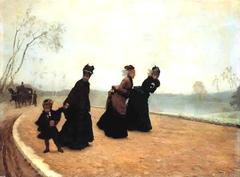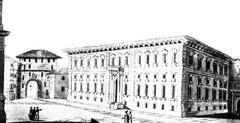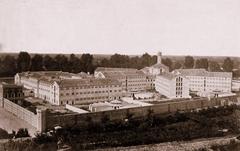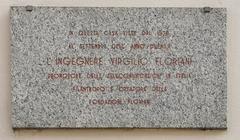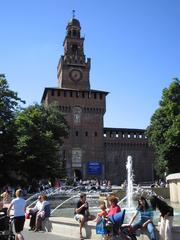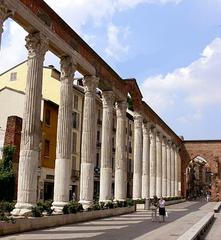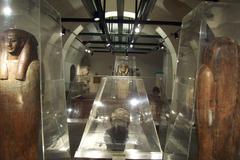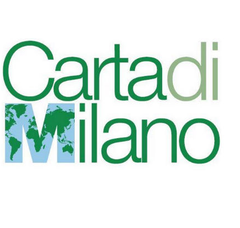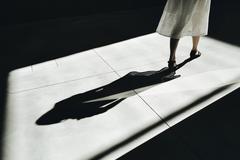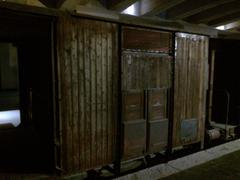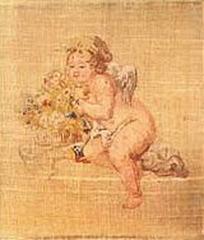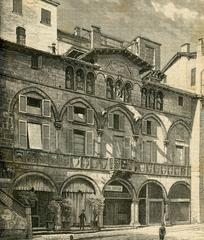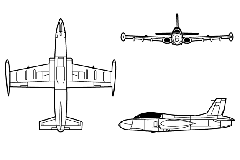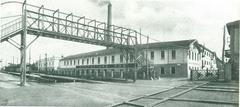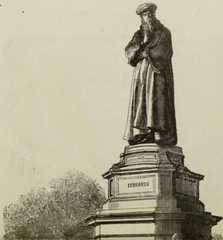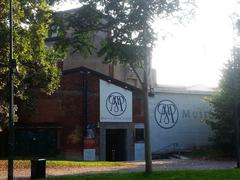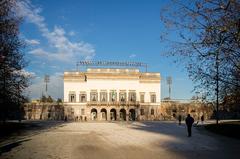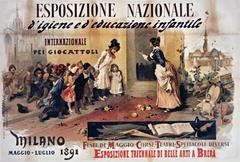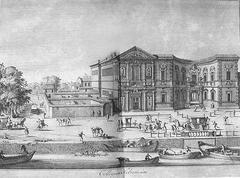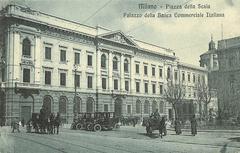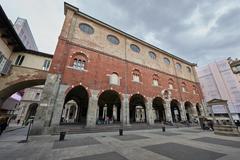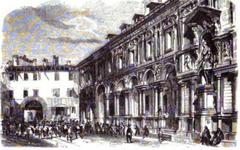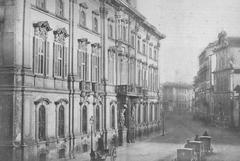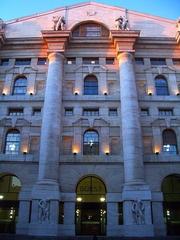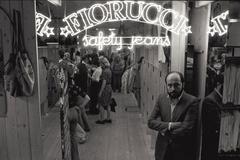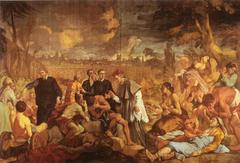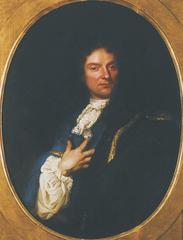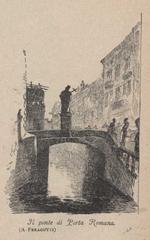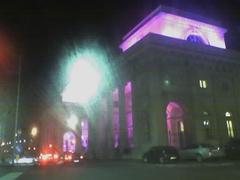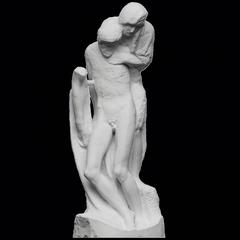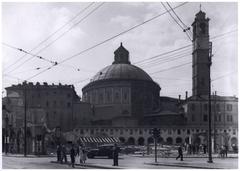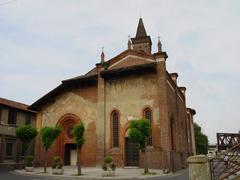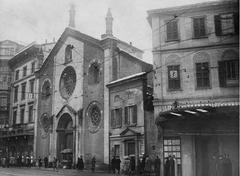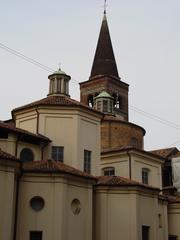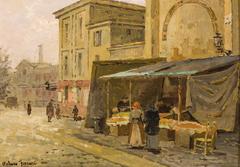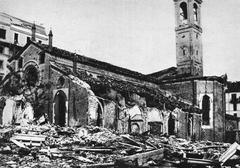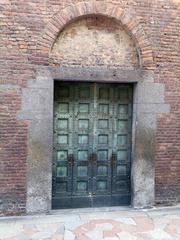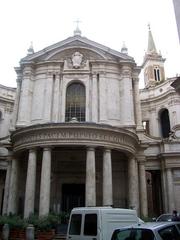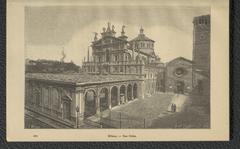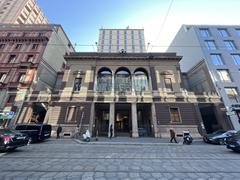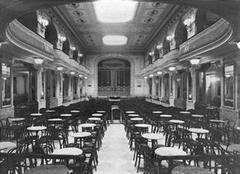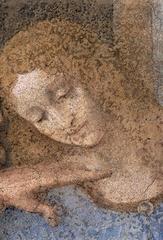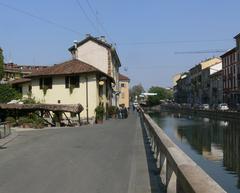Comprehensive Guide to Visiting Milan, Metropolitan City of Milan, Italy
Date: 13/08/2024
Captivating Introduction
Imagine a city where ancient history dances with cutting-edge fashion, where Gothic spires cast shadows over sleek skyscrapers, and the aroma of fresh espresso mingles with the hum of Vespas. Welcome to Milan, a city that isn’t just a destination but an experience that awakens all your senses. With its rich tapestry of culture, history, and modernity, Milan offers something for everyone. From the grandeur of the Duomo di Milano to the artistic masterpieces housed in the Sforza Castle, this city is a treasure trove of stories waiting to be discovered. Milan’s vibrant cultural scene, epitomized by events like Milan Fashion Week and the Milan Film Festival, makes it a global hotspot. And let’s not forget the culinary delights, where traditional dishes like Risotto alla Milanese and Ossobuco tantalize the taste buds. So, whether you’re a history buff, an art lover, a fashion enthusiast, or a foodie, Milan promises an unforgettable journey. Ready to dive into the heart of Italy’s fashion and cultural capital? Let’s explore Milan together (milanoexplorer.com, followingtherivera.com).
Table of Contents
- Historical Overview
- Cultural Significance of Milan
- Top Attractions
- Introduction
- Duomo di Milano
- Galleria Vittorio Emanuele II
- Teatro alla Scala
- Sforza Castle
- Santa Maria delle Grazie and The Last Supper
- Brera Art Gallery
- Navigli District
- Leonardo’s Vineyard
- Cimitero Monumentale
- Fashion District (Quadrilatero della Moda)
- Day Trips: Lake Como and Bergamo
- Practical Tips for Visitors
- Call to Action
Historical Overview of Milan
Early Beginnings and Roman Influence
Picture this: a bustling Celtic settlement, strategically nestled in the fertile Po Valley. That’s Milan for you, or as the ancient folks called it, Mediolanum. Founded around 600 BC by the Insubres, Milan quickly caught the eye of the mighty Romans, who took over in 222 BC. Under Roman rule, Milan became a commercial and cultural hub, reaching its zenith when Emperor Diocletian declared it the capital of the Western Roman Empire in 286 AD. Imagine the grandeur! (milanoexplorer.com).
Medieval Milan and the Rise of the Sforza
Fast forward to medieval times, and you’ll find Milan navigating through invasions and power plays. By the 11th century, it transformed into a formidable medieval commune. Enter the 15th century and the Sforza family, particularly Ludovico il Moro, who turned Milan into an artistic haven. Think Leonardo da Vinci’s contributions to the city’s cultural landscape.
Discovering Milan: A Tapestry of Culture and Charm
Historical Landmarks
Duomo di Milano (Milan Cathedral)
Behold the grandeur of the Duomo di Milano, an architectural wonder and Italy’s largest church. Towering at 108 meters, this Gothic masterpiece, adorned with 135 spires and 3,500 statues, took nearly six centuries to complete. Step inside to marvel at the stunning stained glass windows and intricate sculptures, then ascend to the rooftop for panoramic views of Milan. Imagine a place where history whispers through every stone. Try a fun scavenger hunt: find the statue of Saint Bartholomew holding his flayed skin (followingtherivera.com).
Castello Sforzesco
Nestled near the bustling city center, Castello Sforzesco is a storied fortress now hosting a treasure trove of museums. Stroll through its courtyard, a favorite local hangout, before diving into collections featuring works by Leonardo da Vinci and Michelangelo. Don’t miss the musical instruments and the fascinating Egyptian and prehistoric archaeology sections. Hear the echoes of history and imagine the clinking of swords as you explore (tripsavvy.com).
Art and Museums
The Last Supper by Leonardo da Vinci
Book your tickets early to witness Leonardo da Vinci’s masterpiece. This iconic fresco captures the moment Jesus announces that one of his disciples will betray him. Feel the tension and drama in this timeless work. It’s the best way to ensure you don’t miss out on these iconic sites (followingtherivera.com).
Public Transport
Navigate Milan with ease using its efficient public transport system. A 24-hour transport ticket offers unlimited travel on the metro, trams, and buses within designated zones – a cost-effective way to explore the city. Hop on a tram and let the rhythmic clatter of the tracks guide you through Milan’s bustling streets (followingtherivera.com).
Best Time to Visit
Visit Milan in the spring (April to May) or fall (September to November) when the weather is pleasant, and the city brims with cultural events. Avoid the hot, humid summer and the cold, rainy winter. Picture yourself strolling through sun-dappled streets, where the aroma of espresso mingles with the scent of blooming flowers (boundlessroads.com).
By diving into Milan’s rich cultural significance, you unlock a vibrant, historic city brimming with stories and experiences. Ready to explore? Download Audiala, your ultimate tour guide app, for beautifully crafted, insightful audio guides. Discover Milan’s secrets and stories with Audiala, your perfect companion for a memorable adventure.
Fashion and Film
Milan Fashion Week
Milan is one of the “Big Four” fashion weeks globally. Held twice a year, it showcases the latest collections from top designers, attracting fashion editors, buyers, celebrities, and influencers. Imagine the buzz and flash of cameras as the latest trends unfold before your eyes (cntraveller.com).
Milan Film Festival
Celebrate independent cinema at the Milan Film Festival. This annual event features screenings, workshops, and discussions with filmmakers from around the world. It’s a platform for new talent and innovative storytelling. Feel the excitement of discovering the next great filmmaker (worldcitiescultureforum.com).
Culinary Scene
Traditional and Fusion Cuisine
Milan’s culinary scene is a delectable blend of tradition and innovation. Savor classic dishes like Risotto alla Milanese, Ossobuco, and Panettone at its Michelin-starred restaurants and trendy eateries. Whether you’re a foodie or just hungry, Milan’s gastronomy is a feast for the senses. Close your eyes and let the rich, creamy texture of risotto transport you to culinary heaven (italia.it).
Aperitivo Culture
Embrace the Milanese tradition of aperitivo. In the early evening, enjoy a pre-dinner drink with small bites. Popular spots include the Navigli canals and the Brera district, where a relaxed atmosphere and a variety of snacks await. The clinking of glasses and laughter fills the air as you unwind with friends (italia.it).
Visitor Tips
Booking in Advance
Avoid long lines by booking tickets for major attractions like the Duomo and “The Last Supper” well in advance. It’s the best way to ensure you don’t miss out on these iconic sites (followingtherivera.com).
Local Lingo and Etiquette
Learn some key Milanese phrases to enhance your experience. For example, greet with a friendly “Ciao” (hi) or ask for directions with “Dove si trova…?” (where is…?). Remember, a little effort goes a long way. And don’t forget to say “Grazie” with a smile!
Practical Information with a Twist
Explore Milan like a pro! “When in Milan, roam as the locals do; skip the cab, take the tram, and say ‘Ciao!’ to new views!” Embrace the city’s charm and let its rhythm guide you on your adventure.
Discover Milan: A Journey Through Time and Style
Introduction
Welcome to Milan, a city where ancient history meets cutting-edge fashion, and Gothic spires shadow sleek skyscrapers. Imagine strolling through cobblestone streets, with the aroma of fresh espresso wafting through the air and the distant hum of Vespas adding a rhythmic backdrop. Milan isn’t just a destination; it’s an experience that awakens all your senses.
Duomo di Milano
The Duomo di Milano isn’t just a cathedral; it’s a testament to human perseverance and artistic genius. Picture standing before this colossal Gothic masterpiece, which took over 600 years to complete. With 135 spires and thousands of statues, it’s a sight that leaves you awestruck. Climb up to the rooftop terrace for a breathtaking view of Milan’s skyline, where the statues seem to come to life, especially as the sun sets, casting a golden glow over the city (bucketlistly.blog).
Galleria Vittorio Emanuele II
Next to the Duomo, step into the Galleria Vittorio Emanuele II, one of the oldest shopping malls in the world. This isn’t just a place to shop; it’s an architectural marvel. The glass-vaulted arcade, with its intricate mosaics and ironwork, reflects the grandeur of 19th-century design. Whether you’re indulging in high-end shopping or simply soaking in the vibrant atmosphere, the Galleria is a must-visit (bucketlistly.blog).
Teatro alla Scala
Teatro alla Scala, or La Scala, is more than an opera house; it’s a cornerstone of Milanese culture. Since its opening in 1778, it has hosted legendary performances that have shaped the world of opera and ballet. Take a tour of the theater and its museum to delve into its rich history, featuring an array of costumes, set designs, and musical instruments (savoringitaly.com).
Sforza Castle
Sforza Castle (Castello Sforzesco) is a fortress brimming with history and art. Commissioned by Francesco Sforza in the 15th century, it now houses several museums. Highlights include Michelangelo’s unfinished Pietà Rondanini and the Pinacoteca del Castello Sforzesco, which showcases masterpieces by Andrea Mantegna and Canaletto (mypathintheworld.com).
Santa Maria delle Grazie and The Last Supper
The Santa Maria delle Grazie church, a UNESCO World Heritage site, is home to Leonardo da Vinci’s iconic mural, The Last Supper. Painted between 1495 and 1498, this artwork captures the dramatic moment Jesus reveals that one of his disciples will betray him. Due to its fragile state, access is limited, so be sure to book your tickets well in advance (thetourguy.com).
Brera Art Gallery
The Pinacoteca di Brera is Milan’s premier art gallery, showcasing an extensive collection of Italian Renaissance art. Located in the bohemian Brera district, the gallery features works by Raphael, Caravaggio, and Titian. Wander through the charming streets of Brera, where art and culture thrive (savoringitaly.com).
Navigli District
The Navigli District, with its network of Leonardo da Vinci-designed canals, is a lively area filled with bars, restaurants, and art galleries. The Naviglio Grande and Naviglio Pavese canals offer picturesque views and a vibrant nightlife. It’s the perfect spot for a leisurely evening stroll or a night out (bucketlistly.blog).
Leonardo’s Vineyard
Leonardo’s Vineyard (La Vigna di Leonardo) is a hidden gem near Santa Maria delle Grazie. Gifted to Leonardo da Vinci by Ludovico Sforza in 1498, the vineyard has been meticulously restored. A tour of the house and gardens offers a unique glimpse into Leonardo’s life and work in Milan (mypathintheworld.com).
Cimitero Monumentale
The Cimitero Monumentale is more than a cemetery; it’s an open-air museum showcasing elaborate tombs and sculptures by prominent Italian artists. Established in 1866, it is the final resting place of notable figures like composer Giuseppe Verdi and writer Alessandro Manzoni. It’s a place of grandeur and contemplation (savoringitaly.com).
Fashion District (Quadrilatero della Moda)
Milan is synonymous with fashion, and the Quadrilatero della Moda is its epicenter. Bounded by Via Montenapoleone, Via della Spiga, Corso Venezia, and Via Manzoni, this district features flagship stores of luxury brands like Prada, Gucci, and Versace. Even if shopping isn’t on your agenda, a walk through this stylish area offers a glimpse into Milan’s fashion-forward culture (savoringitaly.com).
Day Trips: Lake Como and Bergamo
Milan’s strategic location makes it an excellent base for day trips to nearby attractions. Lake Como, with its stunning landscapes and charming villages, is just an hour away by train. Explore towns like Bellagio and Varenna, take boat cruises, and enjoy the scenic beauty of the Italian Alps (bucketlistly.blog).
Another worthwhile day trip is to Bergamo, a historic city known for its medieval architecture and vibrant cultural scene. The city is divided into the Città Alta (Upper Town) and Città Bassa (Lower Town), each offering unique attractions and experiences (bucketlistly.blog).
Practical Tips for Visitors
- Best Time to Visit: The ideal time to visit Milan is during the spring (April-May) and fall (September-October) when the weather is mild and the tourist crowds are thinner (savoringitaly.com).
- Transportation: Milan has an extensive metro system, with tickets costing around 2.20 EUR. Trains are reliable for day trips, though minor delays are common (bucketlistly.blog).
- Safety: Milan is generally safe, but visitors should be cautious of petty theft and pickpocketing, especially in crowded areas like metro stations (bucketlistly.blog).
- Accommodation: The historic center (Zone 1) is the most convenient area to stay, though it can be pricey. Booking in advance is recommended to secure the best deals (mypathintheworld.com).
Call to Action
Ready to explore Milan like a local? Download Audiala, your ultimate tour guide app, for an enriched experience. Get insider tips, personalized itineraries, and much more to make your Milanese adventure unforgettable. Ciao, and see you in Milan!
References
- Milano Explorer, 2023, Author milanoexplorer.com
- Following the Rivera, 2023, Author followingtherivera.com
- Tripsavvy, 2023, Author tripsavvy.com
- Boundless Roads, 2023, Author boundlessroads.com
- Bucketlistly, 2023, Author bucketlistly.blog
- Savoring Italy, 2023, Author savoringitaly.com
- My Path in the World, 2023, Author mypathintheworld.com
- The Tour Guy, 2023, Author thetourguy.com
- Italia.it, 2023, Author italia.it
- CN Traveller, 2023, Author cntraveller.com
- World Cities Culture Forum, 2023, Author worldcitiescultureforum.com



